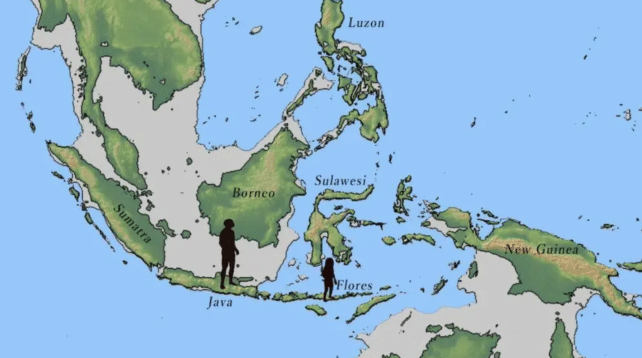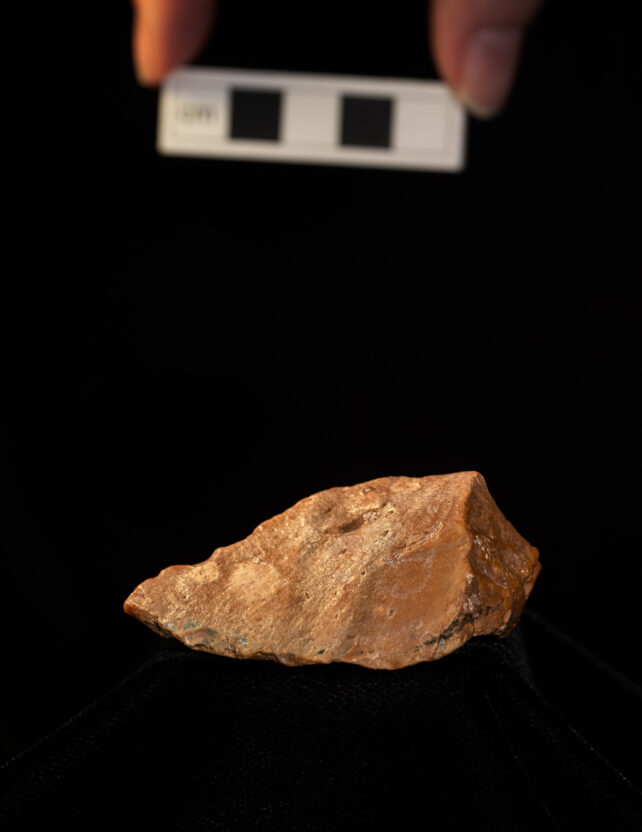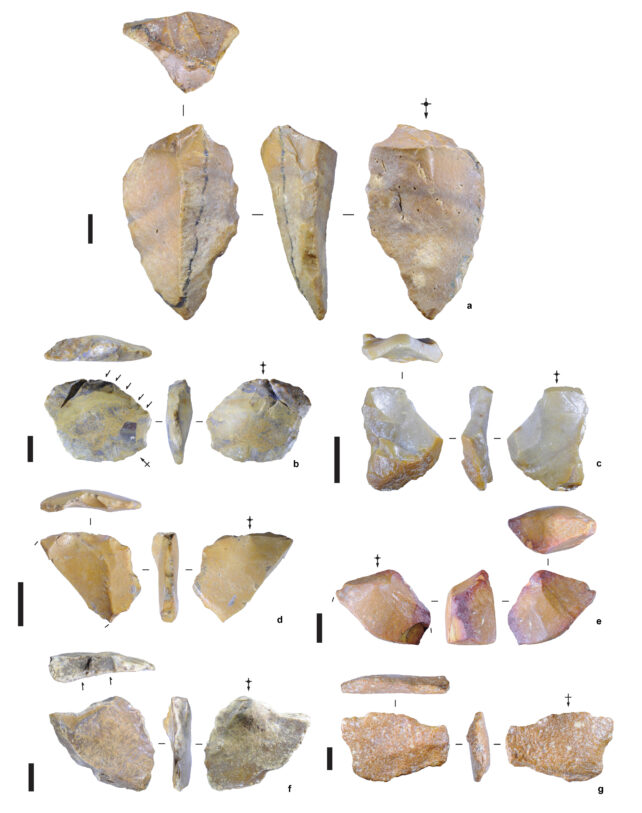The ancestors of the ancient 'hobbits' who once lived on the Indonesian island of Flores were not the only early hominins to cross deep ocean barriers more than a million years ago.
A team of archaeologists from Indonesia and Australia has now discovered the tools of a mysterious neighbor who resided on the island of Sulawesi to the north around the same time, if not earlier.
"It's highly unlikely these early hominins had the cognitive capacity (especially the ability for advanced planning) required to invent boats," archaeologist and co-lead of the expedition, Adam Brumm, told ScienceAlert.
"It is more likely that hominins got to Sulawesi by accident, most probably as a result of 'rafting' on natural vegetation mats. It's thought rodents and monkeys made overwater crossings from the Asian mainland to reach Sulawesi in this way."
Related: Smallest Known Species of Human May Have Had an Even Smaller Ancestor
The seven flaked stones on Sulawesi were found at different depths below ground, but according to the dating of local sandstone and a nearby pig fossil, the tools range in age from 1.04 million years to 1.48 million years.

If correct, the artifacts could represent the earliest evidence of human activity in Wallacea – a string of mainly Indonesian islands that has separated the Asian and Australian continents for millions of years.
The identity of the isolated toolmakers remains a mystery.
Brumm has been studying early hominins in the region for decades, and he co-led the recent archaeological expedition on Sulawesi with Budianto Hakim from the National Research and Innovation Agency of Indonesia (BRIN).
Archaeologist Debbie Argue, who was not involved in the discovery, told ScienceAlert the findings are "most important", because they add to the startling fact that early Pleistocene hominins could somehow make sea crossings.
"With evidence for hominins on three islands that have never been attached to a mainland – Flores, Luzon, and now Sulawesi – island Southeast Asia is shaping up to be an extraordinary frontier for human evolution," said Argue.

Until now, the earliest evidence of stone tools in Wallacea – which are thought to be 1.02 million years old – came from the island of Flores.
Flores is the same place where archaeologists discovered the short-statured Homo floresiensis – also known as the 'hobbit' – in a cave in 2003. This meter-high hominin (3.3 feet) with a brain the size of grapefruit took the world by surprise when it was found, because it didn't look like any other early human.
The remains of H. floresiensis date up to 100,000 years ago, but its presumed ancestors on the island date back 700,000 years. The 1.02 million-year-old stone tools on Flores were probably made by those ancestors – whether descended from Homo erectus or another hominin species on the Asian mainland.
According to a 2021 interview with archaeologist Lucy Timbrell, Brumm accidentally happened upon the Flores tools while "nursing an appalling hangover" due to a local village ceremony the night before.
"Whilst stumbling about in the sweltering heat, in a bewildered state, I found some heavily patinated stone tools eroding out from a fluvial conglomerate exposed at the base of a gully," Brumm recalled in the interview.
"I have since tried to make major archaeological discoveries while hungover, but it only worked that one time."

Archaeologists have yet to uncover hominin fossils on Sulawesi, but the evidence of stone tools indicates their existence.
It's unknown if the Sulawesi population was related to hominins on Flores, but the late Mike Morwood, one of the co-discoverers of the 2003 'hobbit', was convinced that Sulawesi was the key to understanding where H. floresiensis came from.
"We had always suspected that hominins were established on Sulawesi for a very long period of time, but until now we had never found clear evidence," Brumm told ScienceAlert.
Influenced by Morwood's thinking, Brumm suspects that Sulawesi was once a stepping stone to Flores from mainland Asia (which once stretched as far as Java and Borneo).
In 2010, Morwood told The Guardian that he suspected tools on Sulawesi could date back two million years. "This is going to put the cat among the pigeons," he said at the time.
No doubt he would have been thrilled by the recent work of Brumm's and Hakim's team.
The archaeologists now plan to search Sulawesi for direct remains of the mysterious tool makers.
"We are also working at much younger sites that we hope will provide insight into what happened to these early humans when our species arrived on the island at least 65,000 years ago," said Brumm.
The study was published in Nature.
